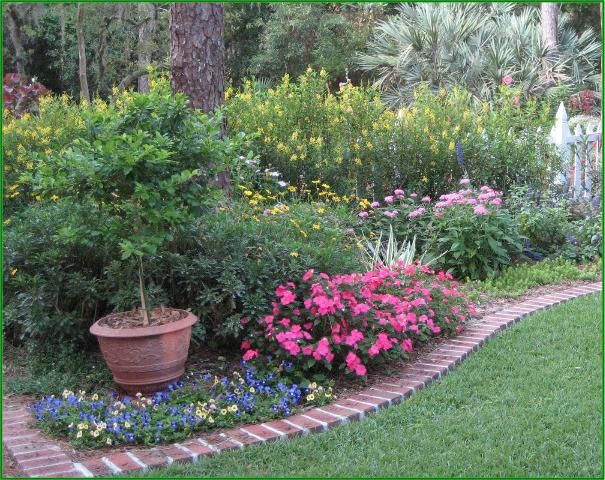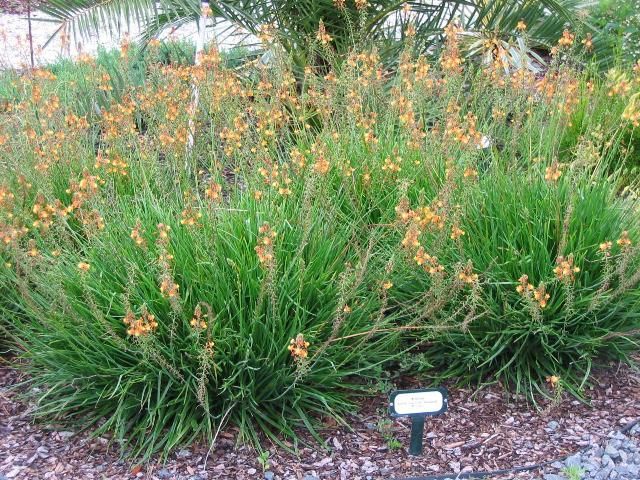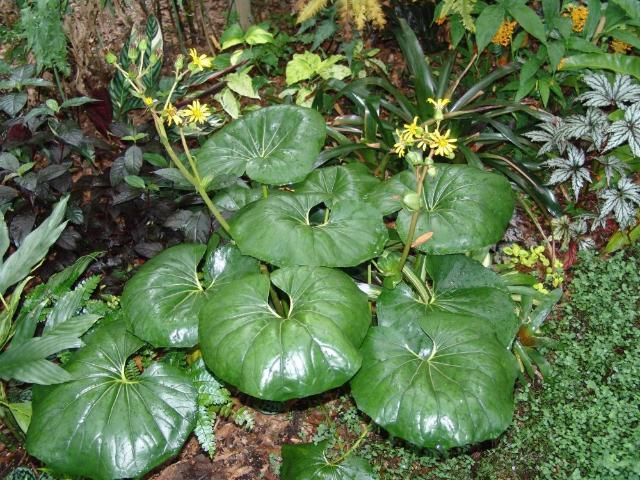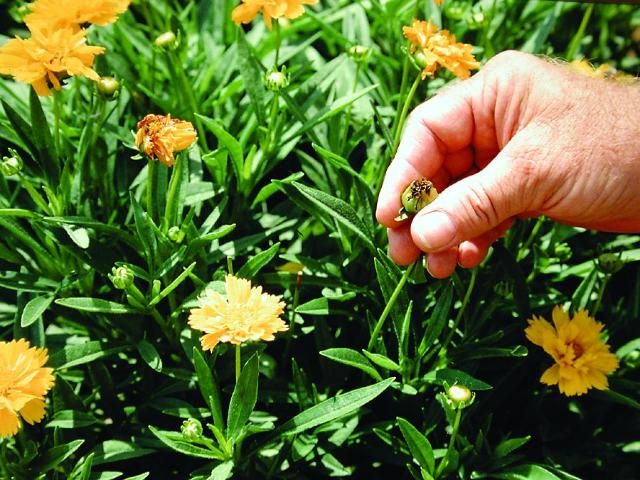This publication is intended for home gardeners and landscape professionals interested in herbaceous perennials that beautify Florida landscapes (Figure 1). Once established, perennials typically require less maintenance than annuals and have the advantage of being a more permanent part of the landscape.

Credit: UF/IFAS
Perennials are plants that grow indefinitely. The shrubs and trees that comprise our landscapes are perennials, but these are referred to as woody perennials. The plants discussed here are herbaceous perennials–plants with little or no woody tissue. However, under the continuous growing conditions of South Florida, some herbaceous perennials become woody shrubs. Likewise, plants that are normally woody shrubs in South Florida behave as herbaceous perennials in North Florida, where they are killed to the ground each winter. Plants that grow from bulbs, corms, tubers, or other types of underground storage systems are also herbaceous perennials.
Selection and Use
The perennials listed in Table 1 are good performers in Florida gardens or in containers. Many other perennials exist, but they may not be suited to Florida's climate and soils.
Some perennials are used to best advantage when they are planted in masses (Figure 2). The bold displays of color they provide are much more pleasing than individual plants placed here and there. Evergreen and flowering shrubs provide an attractive backdrop for masses of small perennials, whereas large-growing perennials can be used as specimen plants.

Credit: UF/IFAS
Note the mature size of each perennial you select. Most large-growing perennials can be maintained as a smaller plant, but it may require frequent pruning to keep them that way. Is the perennial tender or hardy to cold? Tender perennials need cold protection during frosts or freezes; some dieback and return from the roots. How much sunlight does it require? When does it flower? Ideally, a garden should have a succession of blooms throughout the year.
When designing a bed, think of plant form and texture (Figure 3). Pleasing foliage combinations (clumping with upright forms; delicate with bold textures) give the garden interest long after the flowers are gone.

Credit: UF/IFAS
Flower and foliage color is another important design consideration. "Warm" colors, such as orange, red, and yellow, should be grouped together and segregated from "cool" hues and pastels. White, blue, silver/gray, and green go with everything and can be used as transition colors in the garden (Figure 4). Repetition of color and form pulls the eye through the garden and provides a pleasing cohesiveness.

Credit: UF/IFAS
Consider all these factors when determining how and where plants should be used in the landscape or perennial garden. Inexperienced perennial growers may find it challenging to design a garden. Luckily, most perennials transplant easily, and beds can be rearranged if needed.
Planting and Care
The most important step in establishing perennials is preparing the planting bed. Because most perennials remain in the ground for several years without being divided or moved, proper soil preparation is essential.
Sandy soils should be amended with organic matter, such as manure, peat, or compost. Apply several inches of organic matter to the soil surface and work it into the top 10 to12 inches. A soil pH of 5.5 to 6.5 is recommended. Many UF/IFAS Extension offices test soil and make pH recommendations or soil samples can be sent to the UF/IFAS Soil Testing Lab in Gainesville (https://edis.ifas.ufl.edu/entity/topic/home_soil_testing).
Space the plants in the bed to allow for their future growth and for cultivation between them. Plant them so that the top of the root ball is slightly above the soil surface. Mulch heavily, at least 2 to 3 inches, with an organic mulch, such as leaves, pine straw, or wood chips. A thick mulch conserves moisture, insulates roots from heat and cold, and discourages weeds. Do not allow the mulch to touch the base of the plants and reapply it as needed.
Most perennials require little maintenance other than occasional pruning and fertilizing. Timing of fertilizer applications and amounts may vary with different plants and parts of the state. Let the appearance and growth rate of the plant guide you. Many perennials require little or no fertilizer once established; others benefit from one to four light applications of fertilizer per growing season. A general purpose landscape fertilizer containing equal amounts of nitrogen and potassium and low to no phosphorus (such as 15-0-15) is recommended. Controlled-release fertilizers, such as Osmocote®, Dynamite®, and other products, release nutrients slowly over time and can provide excellent results. Occasional pruning may be needed to remove dead flower spikes or unsightly leaves, or to reduce the size of the plant (Figure 5). Some perennials become top-heavy when in bloom and need to be staked.

Credit: UF/IFAS
Propagation
The propagation method for each perennial is listed in Table 1. Division is the quickest and easiest method of multiplying some clumping perennials. Simply dig the plants and shake off the soil. It will be apparent where to separate the plants into smaller units having roots and leaves. The best time to divide plants is after the blooming season or during milder times of the year. Perennials that are frozen back to the ground can be lifted, divided, and reset at that time with good results. Some perennials are easily grown from seed or cuttings as well. Spring and summer are the appropriate seasons for these forms of propagation.
Pests and Diseases
Although the plants listed here are relatively pest free, perennials should be inspected frequently for insects and diseases. If pests are detected early enough, they can be managed before much damage occurs. Many pest problems can be eliminated by simply hand-picking the insects or infected leaves. For severe infestations, chemical control may be needed.
Perennials can also be damaged by microscopic, worm-like parasites called nematodes which live in soil and feed on plant roots. Severely infested beds should be treated and replanted with new plants. For information on nematodes, insects, and diseases, contact your local UF/IFAS Extension office: https://sfyl.ifas.ufl.edu/find-your-local-office/.
Acknowledgements
The author wishes to thank the following for their review of this publication and their contributions: Dr. Marc S. Frank, UF/IFAS Extension Botanist, Dr. Sandra B. Wilson, UF/IFAS Horticulture Professor, Dr. Gary Knox, UF/IFAS Horticulture professor and state Extension specialist, and Terry Brite Delvalle, retired horticulture agent, UF/IFAS Extension Duval Extension.
Reference
Park Brown, S., and R. Schoellhorn. 2006. Your Florida Guide to Perennials. Gainesville: University Press of Florida.